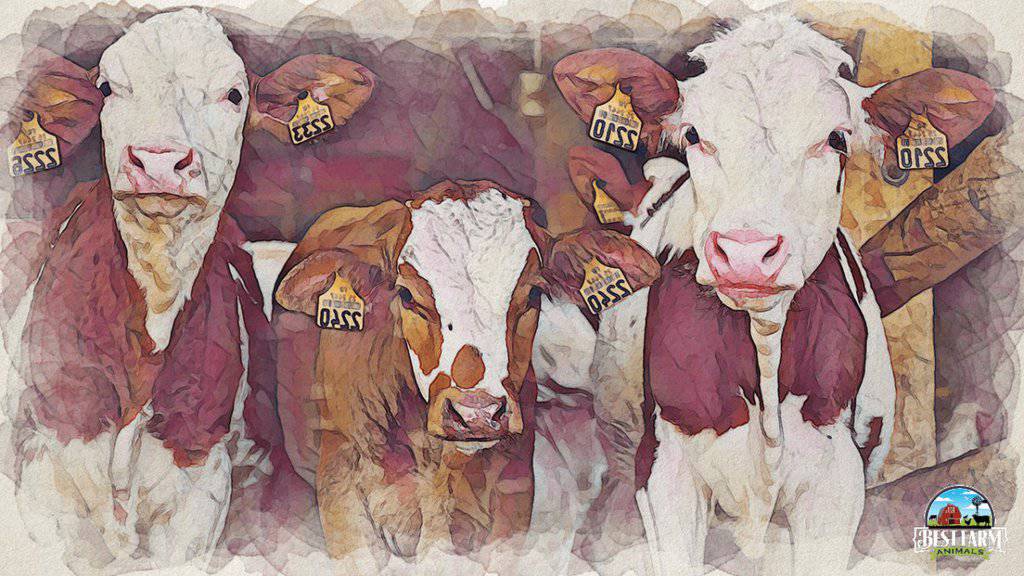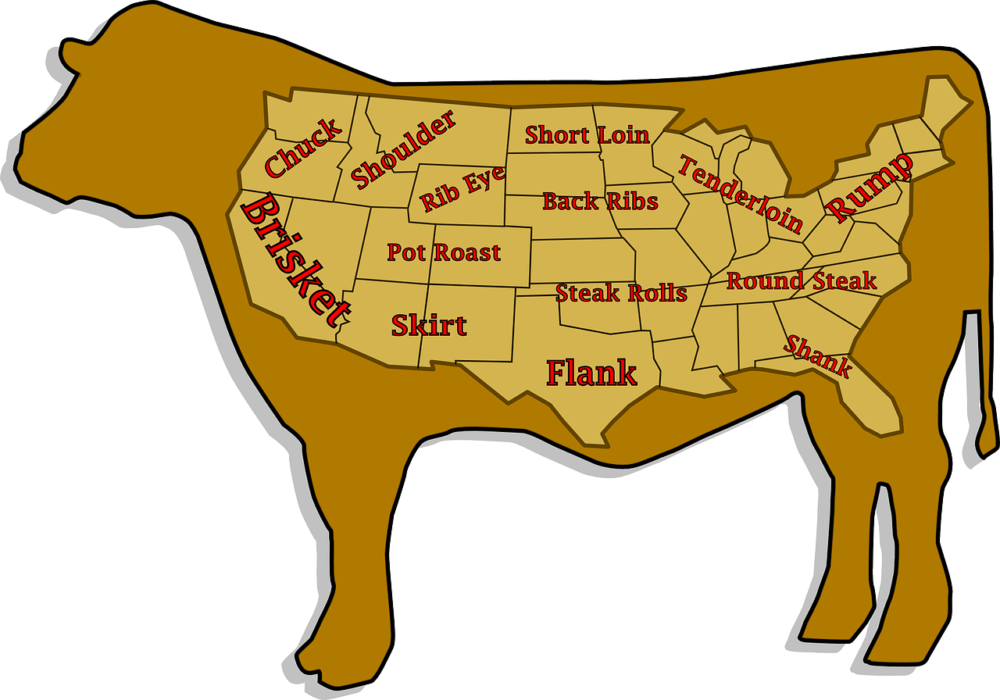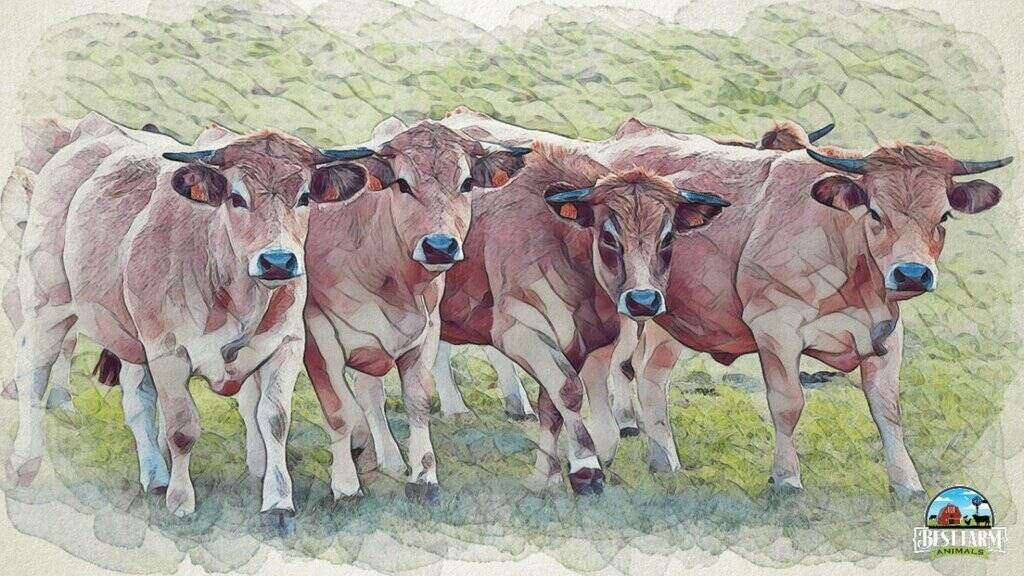Are you looking to purchase responsible and humane beef? One of the biggest reasons I look to purchase a cow is because I can get a wide variety of cuts for a much lower cost than at the grocery store.
Others choose to purchase a cow because they want to control what the cow eats, and how it lives, and because they know the quality of the beef in their freezer.
Skip Ahead
- Cost to Butcher a Cow
- Dairy Cow Recommended Supplies
- Cost of Butchering a Beef Cow: Prices & Fees
- How Much Meat Is On A 1200 Pound Steer?
- What is the total cost per pound to buy or raise a cow to slaughter?
- What Is The Cost To Purchase A Cow For Butcher?
- How Much Does A Cow Cost To Purchase From A Rancher in 2024?
- How Can I Save Money On The Cost Of A Cow?
- How Much Does It Cost To Buy And Raise A Cow?
- How much does it cost to raise a cow or steer?
- What’s The Total Cost To Purchase And Butcher A Cow?
- Is It Worth It?
- Conclusion
Cost to Butcher a Cow
Just a week ago, I got the final costs on buying and butchering a cow from a local farmer:
How much does it cost to butcher a cow? It costs $1,000 to butcher a cow (paid to the butcher), plus the kill fee of $80 and the cost of the cow. Including the cost of the cow to the farmer, you will pay $4.50 a pound for a cow (or $4,400 for a thousand-pound steer), but that will include premium cuts of meat as well as hamburger.
If you raise the cow, it will cost you about $2.50 a pound (plus feed if applicable).
Some butchers will also charge a travel or transport fee. Others will charge extra if you want the hide kept and they need to scrape it clean. Additional expenses can include shrink wrapping (instead of wrapping the meat with butcher paper).
Let’s dive into the costs of butchering a steer a little deeper.
Cost of Butchering a Beef Cow: Prices & Fees
There are many involved in the costs of butchering a cow. Although they vary across the country, I’ve listed the average costs below.
- Kill Fee: $60-$80 per cow
- Cut and Wrap Fee: $0.45-$1.00 per hanging pound. This cost depends on what part of the country you live in. In the rural areas where there are more butchers and farmers, the processing fee averages between $0.46-$0.65 per hanging pound weight. In other parts of the countries nearer to cities, the cost of processing can be as high as $1.00 per pound of hanging weight.
- Skinning and gutting: $40-60 total. Not all butchers charge a skinning and gutting fee. Others will skin and gut for free, but charge extra if you want the cow skinned in a way that will save the hide.
- Trucking or Transport Fee: Many butchers will come to you to kill and butcher. Others want to transport the cow to their location. Depending on whether you have the means and transportation, you may end up paying between $0.50-$1.00 per mile to transport the cow or have the butcher come to you.
- Shrinkwrapping: Some butchers automatically shrink wrap everything. Others charge extra. Shrinkwrapping is usually between $0.50-$0.75 per pound of final weight.
- Keep the hide: $20-30
- Additional Processing Costs: beef sticks, jerky, sausage or other special processing usually adds extra costs. This is because of the extra time required by the butcher.
How much meat do I get when I buy a cow to butcher? The total pounds of meat you take home will be between 40-45% of the live weight of the cow. A 1250 lb steer will yield between 500-560 lbs of meat. This depends in part on what cuts you choose, whether you choose bone-in cuts, and how long the steer hangs to age. Grass-finished steers average around 30-38% of the live weight. A half cow yields 250-280 lbs of beef after butchering.
What is the difference between a cow’s live weight, the hanging weight, and the finished weight? A cow’s live weight is the weight of the cow just before butcher. After the blood, hide and inedible parts are cleaned from the carcass, what’s left is the hanging weight. The hanging weight is usually between 60%-62% of the live weight. The finished or cut weight is the weight after the cow has been processed, cut and aged. The cut weight is about 25-35% less than the hanging weight.
That’s because ligaments, tendons, gristle are removed in the final cut. Plus, aging allows for additional water evaporation.
It’s also important to know that the larger the steer, the smaller the percentage of meat is lost to the inedible parts. That’s because larger steers will have gained the extra weight in meat.
How Much Meat Is On A 1200 Pound Steer?
| 1000 pound Steer | 1200 pound Steer | 1400 pound Steer | |
| Live Weight | 1000 lbs | 1200 lbs | 1400 lbs |
| Hanging Weight | 600-620 lbs | 720-744lbs | 840-868 lbs |
| Cut Weight | 400-450 lbs | 480-540 lbs | 560-630 lbs |
| Estimated Costs
(no extras included) | $65 kill fee
$400 processing fee estimated at $0.65 per pound at the hanging weight of 610 lbs | $65 kill fee
$476 processing fee estimated at $0.65 per pound at the hanging weight of 732 lbs | $65 kill fee
$555 processing fee estimated at $0.65 per pound at the hanging weight of 854 lbs |
| Total Costs | $465 estimated | $541 estimated | $620 estimated |
| Ave Butcher Cost Per Pound | $0.90 per pound for butchering | $0.87 per pound for butchering | $0.86 per pound for butchering |
It is important to realize that any additional costs such as shrink wrap, hide preservation, guts, transportation or other costs will affect the final cost of the meat. This estimate does NOT include the cost of the actual cow, either to purchase or to raise.
What is the total cost per pound to buy or raise a cow to slaughter?
Of course, it would be super cheap to pay the butchering costs and go home with quality beef for less than $1.00 per pound. But, that cost doesn’t include the actual cost of the cow (see cattle cost charts). You will need to raise a cow for butchering or purchase one from a farmer or rancher.
There are different costs associated with buying or raising a cow to butcher. Let’s go over them.
What Is The Cost To Purchase A Cow For Butcher?
If you plan to purchase a cow instead of raising it, you must purchase it from a rancher. The cost to the rancher is based on the live weight of the cow. There are several ways to purchase a cow.
You can purchase it from a local farmer. You can purchase it off a commercial website that sells whole, half, or quarter cows to consumers, or you can purchase it through other means. I’ll go over some creative ways to find a cow for sale locally.
The price per live pound will depend on whether the cow was grass-fed, grain and grass-fed, organically grass-fed, or other factors. Most small-scale farmers and ranchers don’t use many of the same practices used by commercial feedlots that are considered inhumane. They raise their cattle on grass fields, open ranges, and mountain hillsides.
But, if you purchase an organically raised cow, the price is likely to be more expensive. That’s because it can cost significantly more to grow completely organic grass and take significantly more space for the same amount of grass.
See also: Should I Raise a Beef Cow or Buy Beef From The Store?

How Much Does A Cow Cost To Purchase From A Rancher in 2024?
A cow generally costs $3-$4 per pound for live weight. Cows usually weigh 1,000-1,2000 lbs, meaning a total price of $3,500-$4,200. The cost is higher for an organically raised cow. A whole cow costs less per pound than purchasing a half or quarter of the cow. The smaller the percentage of the cow purchased, the higher the cost per pound.
If that seems expensive, there are a few importact facts you should know. Purchasing a locally- raised cow will yeild you significantly tastier and healthier meat that’s better for the enviornment because your food didn’t have to travel across the country (or world) to get to your plate.
Even so, there are ways to save money on local beef. Let’s dive in more.
How Can I Save Money On The Cost Of A Cow?
There are other ways to find a local cow that may save you money on the cost of a cow. Check out these other ideas.
- Ask a local rancher to raise a cow for you. Purchase a yearling, which costs less than fully-grown cows, then ask a local rancher to raise it with his cattle. You will have to pay a fee to him for raising it, but depending on what he charges, it may be less than the final cost of purchasing a fully-grown steer. (Not all ranchers will be willing to raise a cow for you for less than it would cost to purchase it from them at the end of the summer)
- Buy a cow from kids in 4-H at the county fair: Toward the end of the summer, during fair time, there are almost always kids who have raised 4-H cows who didn’t qualify for the fair. 4-H cows must meet a certain weight limit to sell at the fair. Those kids still want to make some money off their cows so buying a cow that didn’t qualify helps them out. (My neighbor kid once lost about $600 on a cow that they couldn’t sell because the weight wasn’t high enough.)
- Local Connections: Facebook groups, Craigslist, KSL, the butcher, and other local groups are a great resources for finding farmers and families that raise cows.
- Unattended Pasture: Often in rural areas, there are families who have purchased a house with more land than they plan to use. Every year, I see ads on Craigslist or in the classifieds about extra land that’s available for grazing animals on. The owners want to be relieved of the burden of caring and mowing the land. Often the cost to “rent” the land is minimal or may include only the cost of the fencing to keep your cows contained.
How Much Does It Cost To Buy And Raise A Cow?
Raising a cow includes many considerations and costs. For a full analysis of how much a cow costs, check out this article on the costs of a cow, which covers age, weight, type, and gender of the cow and the costs associated with each.
How much does a calf cost?
A beef yearling will cost about $700 and will be based on weight. Generally, a yearling will cost about $135-165 per 100 pounds. A younger calf will cost less because they need more care and have a higher mortality rate. A day-old calf will need to be bottle-fed several times a day. They are usually about $50 a calf.
How much does it cost to raise a cow or steer?
The costs to raise a cow will depend greatly on the resources you have. If you already have enough acreage to grass-feed a cow, then you won’t have as much additional cost. If you need to purchase grain or rent acreage, then it will cost more to raise a cow to full weight.

A single cow needs between 2-5 acres of land to graze from during the year. That amounts to a cost of about $200-300 a year per cow. If you need to purchase the hay, a cow will eat about 30-40 pounds of hay a day. Purchasing hay will increase your costs to about $1,000 a year per cow in feed costs.
To raise a cow over the summer for the butcher, the University of Wyoming has estimated feed costs of about $440 per cow. These costs include estimates for both hay and grain feeding for 90 days.
You will need 1.5 tons of hay and 1,350 pounds of grain. If you raise a 100% grass-fed cow, you will need to plan on taking a little longer to fatten the cow. Purchase the cow earlier in the spring and plan on butchering in October or just before the snow comes.
In 2024, a ton of siliage hay costs around $130. Siliage is one of the cheaper hays, but cows do well on it. Alfalfa hay cost between $200-300 in 2024 while grass hay cost an average of $150 a ton. Fortunately, cows do very well on the cheaper stuff and not so well on the alfalfa.
In addition to feeding the cow from grazing, plan on providing hay for easier consumption.
The cost of raising your own cow and butchering it will cost you between $2.50-$4.50 a pound depending on your existing infrastructure and resources. That equates to $2,850 for a whole cow. If you have to purchase the cow to butcher it, the cost is closer to $4,700.
What’s The Total Cost To Purchase And Butcher A Cow?
When all is said and done, to purchase and butcher a cow will cost you between $4.50-$6.50 per final pound of beef. If you raise the cow yourself, it will cost between $2.50-$3.50 a pound. (These are the final costs in 2024).

Is It Worth It?
A cow raised on grass tastes different than a cow raised on grain. Most people love the taste of grass-raised cows and the fact that the cow could live its life in the sunshine and open fields.
Additionally, there is a lot of comfort in knowing everything that went into your food. It’s also important to know that there are no growth hormones and your cow was raised and butchered humanely.
Although you can purchase many cheaper cuts of beef for as little as $2-3.00 per pound, you really don’t know what went into those cows. Hormone-free beef costs more than that and the nicer cuts of beef are as much as $12.00 a pound at the store.
When you purchase a cow, you get both the cheaper cuts and the more expensive cuts of beef in the total cost of the cow. This means that you save a lot of money on the nicer cuts. Plus, the cheaper cuts of beef are very similarly priced to the organic-grass-fed beef at the grocery store.
Yes, it’s worth it!
After reading this, check out our other articles on:
- How Much Does A Cow Cost To Buy? 2024 Cattle Prices
- 2024 USA Cow Costs: Steer, Calf, Dairy, Beef, Heifer Charts
Conclusion
Opting to buy and butcher a cow offers control over diet and living conditions, ensuring quality beef at a lower cost. With expenses detailed, it’s clear that this method can provide both premium and basic cuts at significant savings, making it a worthy investment for those prioritizing humane, quality meat.
Purchasing and butchering your own cow is not just an economical choice, it’s a step towards ethical and responsible consumption. By choosing this path, you gain unparalleled control over the animal’s diet and living conditions, ensuring the beef in your freezer is of the highest quality. All I know is the best beef I ever tasted came from a locally-raised steer!
Recommended Cattle Supplies (And Dairy Supplies)
This list contains affiliate products. Affiliate products do not cost more but helps to support BestFarmAnimals and our goal to provide farm animal owners with accurate and helpful information.
This shelter is pretty easy to put together and it shelters a good number of cows. It’s sturdy and can withstand our high winds and heavy snows. And it’s cheaper than a barn and easier to build.
Colostrum is critical for calves. If you aren’t able to get some from your cows, this is a quality supplemental colostrum.
Probiotic for cattle with digestion issues in a oral tube. It works for other ruminants and is safe for goats, but is formulated especially for cattle.
A halter to lead Bessie around. This show halter also works for kids showing for 4H.
All Stock Feed is on Amazon, but you’ll pay less if you find it at your local feed store. It’s a great feed for cattle.
Electrical rope for your fencing. This keeps cattle in, but goats, alas- not so well.
Dairy Cow Recommended Supplies
Disposable towels or wet wipes are the first step in cleaning the udders.
Teat Dip and a dip cup are essential for keeping your milk clean. It lasts a while. Mine usually lasts a year to a year and a half.
I use a stainless steel bucket when I milk because it’s easy to clean and carry. These are my preferred milk filters and I use them for cow and goat milk.
This large jar funnel stays much more stable than regular funnels and can handle larger milk volumes.
I like this grain feeder while milking and use this size for the cows and goats being milked.
Balm ointment for sore udders. This cream is popular for people but formulated and created for cows’ udders.
Mastitis Test detects mastitis.

